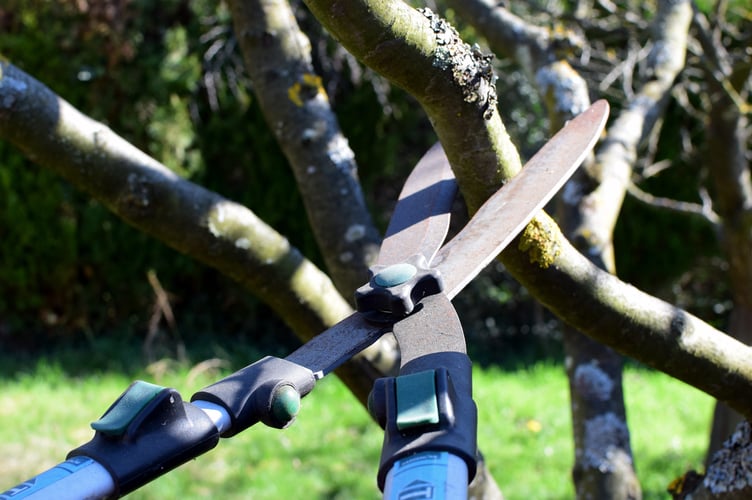I felt like Gok Wan in the garden last week as I gave a ‘condemned’ Osmanthus a make over. My client wanted to remove it altogether but it is such a ‘hard worker’ in the garden, so I wanted to try and keep it. With evergreen holly-like leaves, fragrant flowers, which are often followed by striking black berries, the Osmanthus heterophyllus 'Goshiki' is a slow-growing and compact evergreen shrub reaching around 4- 5ft .
The spiky leaves are marbled and flecked with cream, and as an added bonus, are often tinged pink or bronze when young. The small, fragrant, tubular white flowers form in clusters, in late summer or autumn. So all in all it adds a lot of value to a garden.
I often execute a severe pruning procedure in order to give a shrub a stay of execution. Often by changing the size (radically) or the shape, it can be redeemed. If the client still doesn’t like it, then at least I have given it a chance. They usually get to stay.
Then, enthused and encouraged by ‘Gok Waning’ the Osmanthus, I went on to cloud prune a ‘bloated’ old holly bush that another client wanted removed from their garden.
Cloud pruning is a Japanese method of training trees and shrubs into shapes resembling clouds. It is also known as 'Niwaki', which literally translates to 'garden tree'. The style is said to depict the distilled essence of the tree and whilst I love doing it, I’m not entirely sure that I’m totally sold on the concept – other than it providing a stay of execution for many shrubs. As well as giving a lot of condemned shrubs a second chance, in the right spot a cloud pruned shrub can look fabulous and provide a great living focal point.
It definitely doesn’t have to be confined to Japanese style gardens. The holly tree I ‘sculpted’ is in a traditional garden on the side of a mountain and I’m confident it will soon become a much-loved and admired feature in its own right.
Cloud pruned trees and shrubs will need to be trimmed annually with secateurs or shears in early or late summer to keep specimens in shape, and suckers removed regularly. If you have chosen a flowering shrub to be creative with, be aware that you will need to prune it after flowering, otherwise you could cut off flowering growth.

The most popular Cloud Tree – often found at garden centres - tends to be the Ilex Crenata Cloud Trees (or Japanese Holly). Japanese privet and box-leaved holly also create stunning results when cloud pruned, as does Buxus and more surprisingly, Pieris.
Some hedges can also be cloud pruned to create soft, rounded shapes and even cutting into a specific, sculptural shape – like the fantastic elephants in the yew hedge at Penpont, near Brecon – is a form of cloud pruning – albeit a very clever one!
You may well recall that one of my favourite place to buy some of my tools is Niwaki – their secateurs and shears are simply the best. They are incredibly sharp and light as they have been designed for creating and maintaining Japanese inspired topiary.
Jake Hobson is the founder of Niwaki and a cloud-pruning guru. In 2000, the cloud-pruned trees and box hedges in the Gardens Illustrated’s winning garden at Chelsea took the horticultural world by storm and suddenly what Jake had started calling ‘organic topiary’ became very popular and desirable in gardens of all shapes and sizes.
You can read his interesting story and discover more about ‘precision pruning’ in The Art of Creative Pruning (by Jake Hobson) for sale on www.niwaki.com




